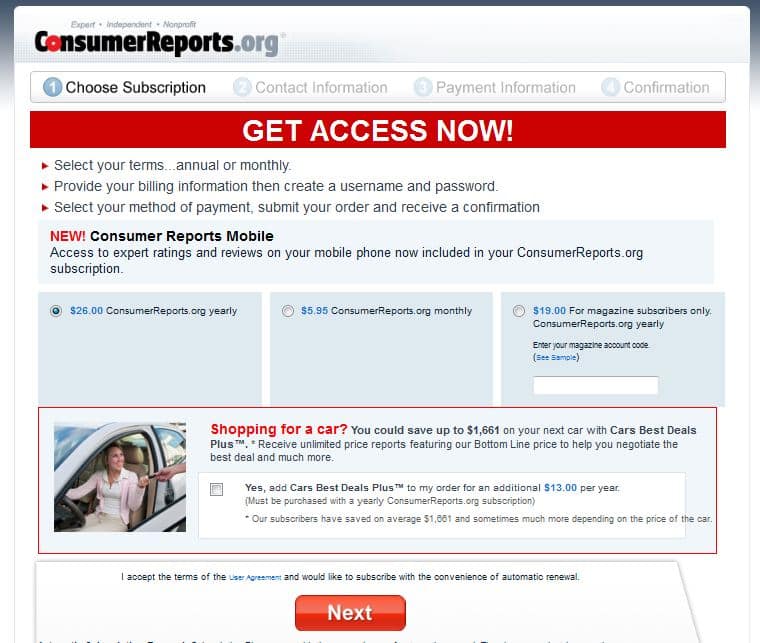
Exclusive with Consumer Reports Online – 18 Effective Tactics for Subscription Marketers
Lorem ipsum dolor sit amet, consectetur adipiscing elit. Ut elit tellus, luctus nec ullamcorper mattis, pulvinar dapibus leo.
While most print magazines have been struggling to find a way to stay viable, Consumer Reports has been able to grow its subscriptions to Consumer Reports Online (CRO) to account for almost half of its subscription revenues. Chief Marketing Officer Jamie Darnow and ConsumerReports.org Editor-in-Chief Rachel Hager gave us an exclusive look at how they do it, sharing 18 lessons for publishers to learn from and imitate, from creative marketing campaigns to their use of account updater software to i...
HELLO!
This premium article is exclusively reserved for Subscription Insider PRO members.
Want access to premium member-only content like this article? Plus, conference discounts and other benefits? We deliver the information you need, for improved decision-making, skills, and subscription business profitability. Check out these membership options!
Learn more about Subscription Insider PRO memberships!
Already a Subscription Insider PRO Member?
Please Log-In Here!
- Filed in Case Studies, Subscriber Only







